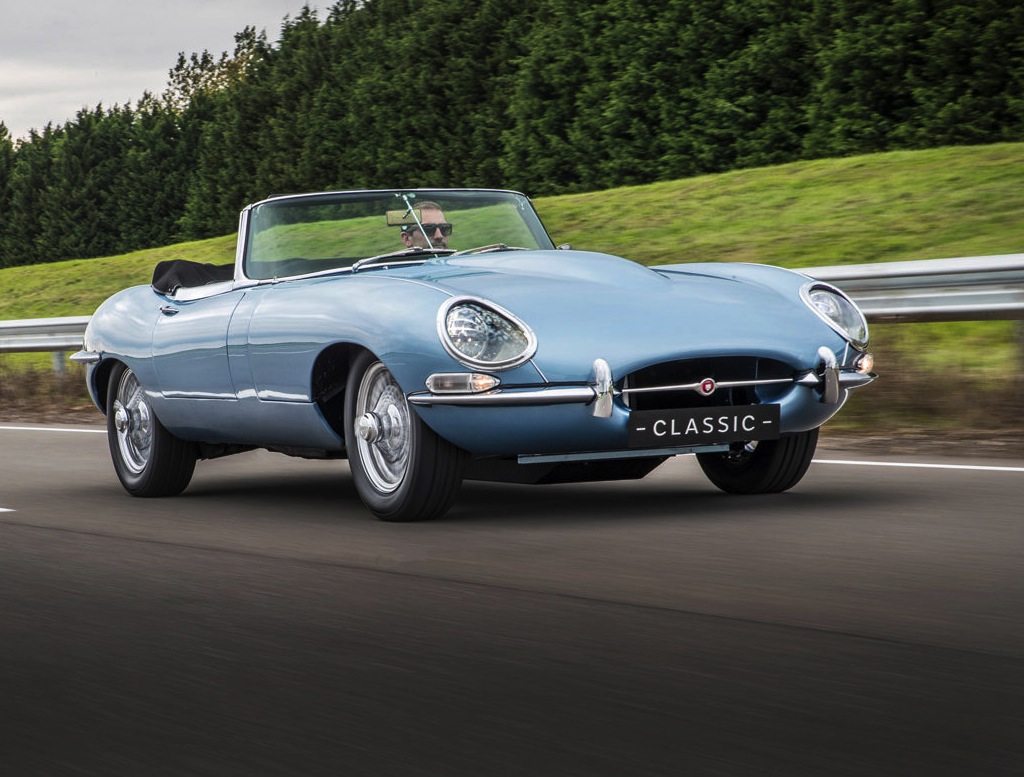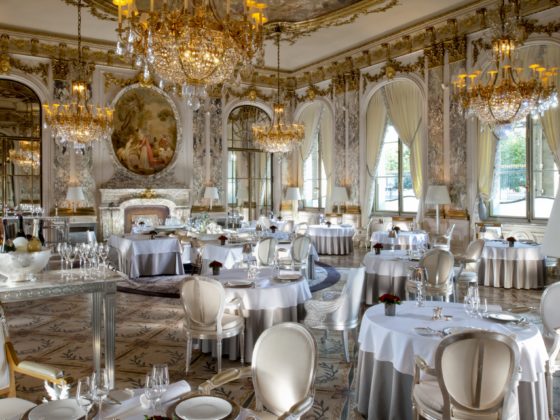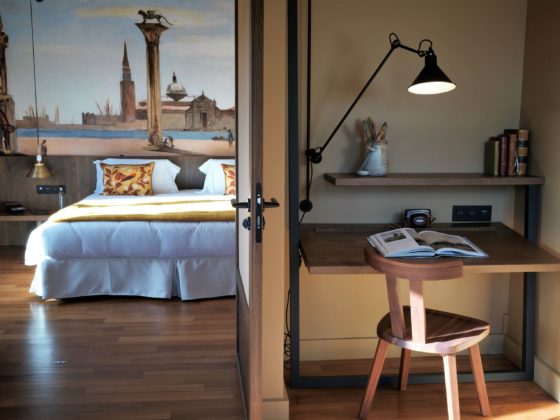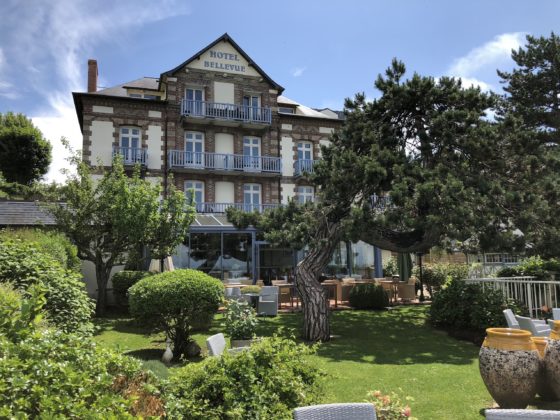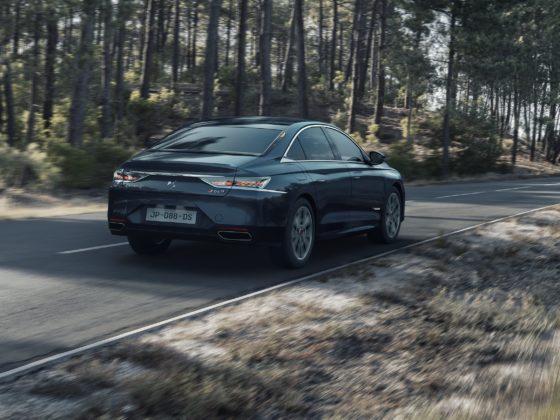Now that you know almost everything about buying the Jaguar E-Type, here’s what’s in store for you if you’re lucky enough to get behind the wheel.
By François Tauriac
First, try to settle in. This is far from a detail, as the beast is very low, and if you’re over 1.70 meters tall, consider putting your sitter on the seat first, then swivel your legs, one by one, under the exaggeratedly large wooden steering wheel. A technique that will prevent you from twisting your knees under the hoop or scratching your shoes under the pedals… Patina, even at home, is respected. The E-Type is so cramped that its designers did not hesitate to modify the floors a few years after its launch. By making them a few centimeters deeper, they allowed the larger sizes to be more comfortable behind the wheel. The curiosity is that the first models, now called “flat floors”, all equipped with the 3.8L engine and the Moss gearbox developed “pre-war”, of slow reputation, are the most expensive in quotation and the most sought after because very rare. They are also paradoxically the least habitable.
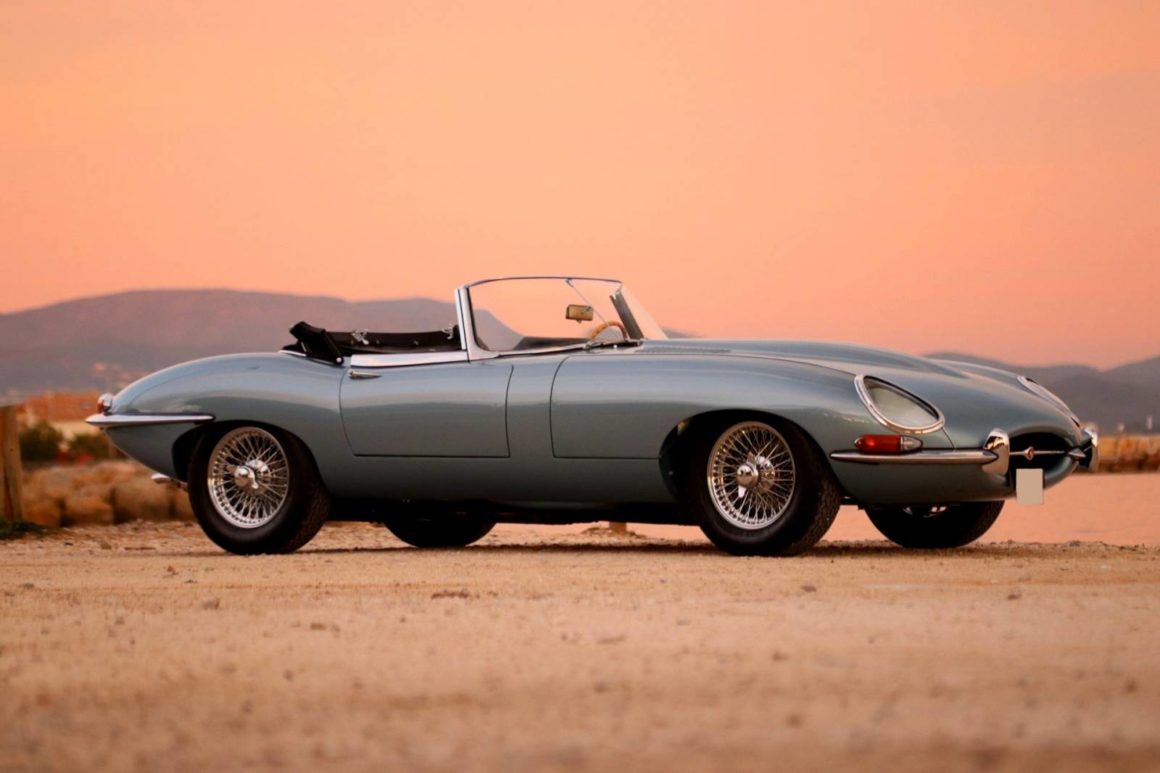
Here you sit. It is therefore necessary to prepare the start-up. Let’s say prepare, because launching a Jaguar inline six is a bit like warming up a Royal Air Force Spitfire Supermarine. You have to be in this mythical car once in your life to be happy and amazed. But sliding your legs almost under the engine compartment, in front of a fighter’s dashboard, is not done without a certain amount of apprehension. On the 1 series, the ignition key is in the middle of the dashboard below the four Smith meters showing oil pressure, fuel level, water temperature and dynamo charge above the six toggle switches. When you turn the tiny Union key – the same as the one on Austin Mini doors and Triumph Tr3 switches – you first hear the characteristic ticking of the fuel pump filling the settling tank and the tanks of the three SU carburetors with SP98. It first panics for about ten seconds, then slows down. The choke control is then turned up all the way and you can finally press the start switch that controls the starter. If you don’t touch the accelerator pedal, so as not to drown the engine, the six twin shafts will quickly run out of steam. But be careful, we’re not on a solenoid choke like on the XK-MK. It is therefore necessary to “play” with the control to adapt the mixture as it heats up.
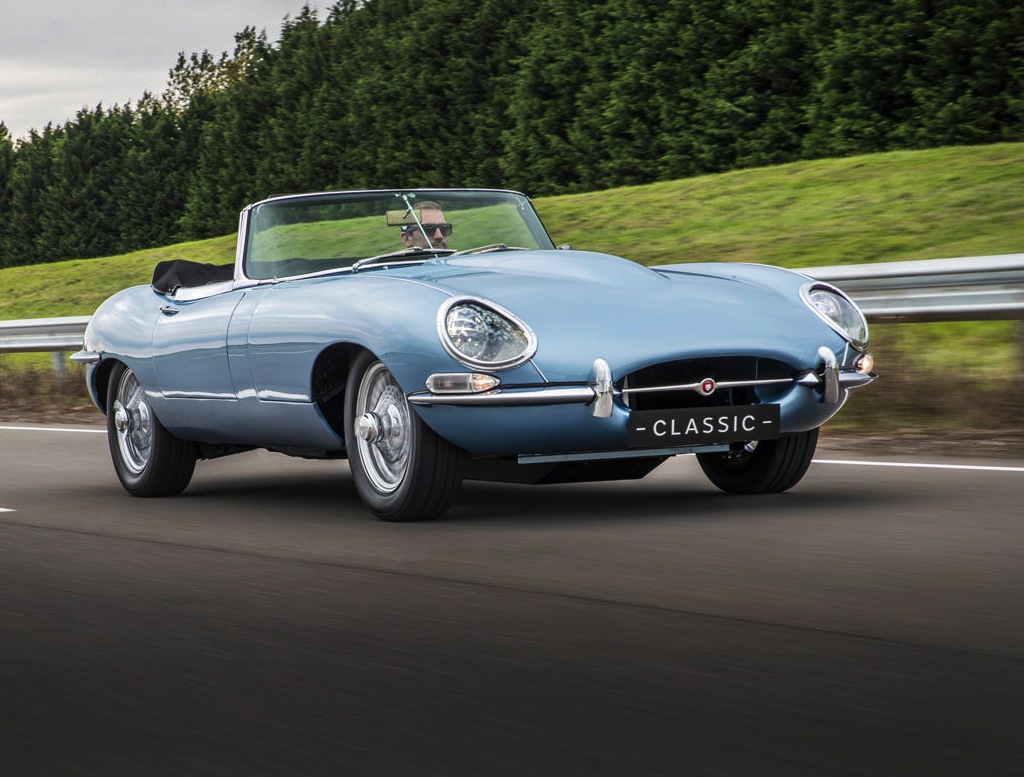
It’s time to shift into first gear. On the 3,8 L the box is not synchro. Don’t panic, it can therefore slightly crack in first. On the 4.2L, it’s a Jaguar gearbox, the best and smoothest. Charge meter is in the +, oil pressure at 40, ignition light off, no lookeed light alert on the left, there is pressure on the brake pedal and clutch, so on track. But beware of maneuvers. The hood is long. Immensely over the top. Sitting in the seats – often tired – you can barely see past its big hump. There is still 50 cm between this protrusion and the bumpers. Chrome moustaches, which are also totally symbolic and do not even protect from flies. But the six-cylinder is very smooth and torquey. With a little finesse on the left foot, you can even make the car move without almost accelerating.

The way is clear. The first acceleration is impressive. Not that the power is overflowing and phenomenal. The 264 hp announced by the manufacturer in 1961 are indeed thoroughbred, but SAE horses. They must therefore gallop an honest 170 hp Din. This was already huge at the time. The car being quite light, it is very quick and its hood literally jumps up at the slightest touch of the throttle. You feel like you’re sitting on the back of a shark hunting at lunchtime in a squid patch. A torpedo in inquisition whose proportions would have been devoted almost exclusively to the engine! Explosive. Because in the FHC coupe there is nothing behind the driver. That a tiny fast back trunk that opens like a cellar hatch and is barely capable of holding a travel bag or two or a pair of Purdey’s for the hunters. In the 2+2 there are also two unfortunate seats for passengers. Long stamping time and US market oblige. Seats that make you wonder who they were really designed for. For small children certainly, because unless you sit across (and eat the transmission tunnel in the back …) it is impossible for a normal adult to sit there. But who can dare to worry about the comfort on board such a machine? Seriously? The engine whirrs its low symphonic notes. And its greedy rises in speed are each time moments of emotion and pleasure. What more could you ask for? The inline six does not turn very high in the revs and we quickly reach the red zone at 5500. Especially on the short decks of American models set for freeways limited to 55 miles since the 60s. No matter, the pleasure is elsewhere.
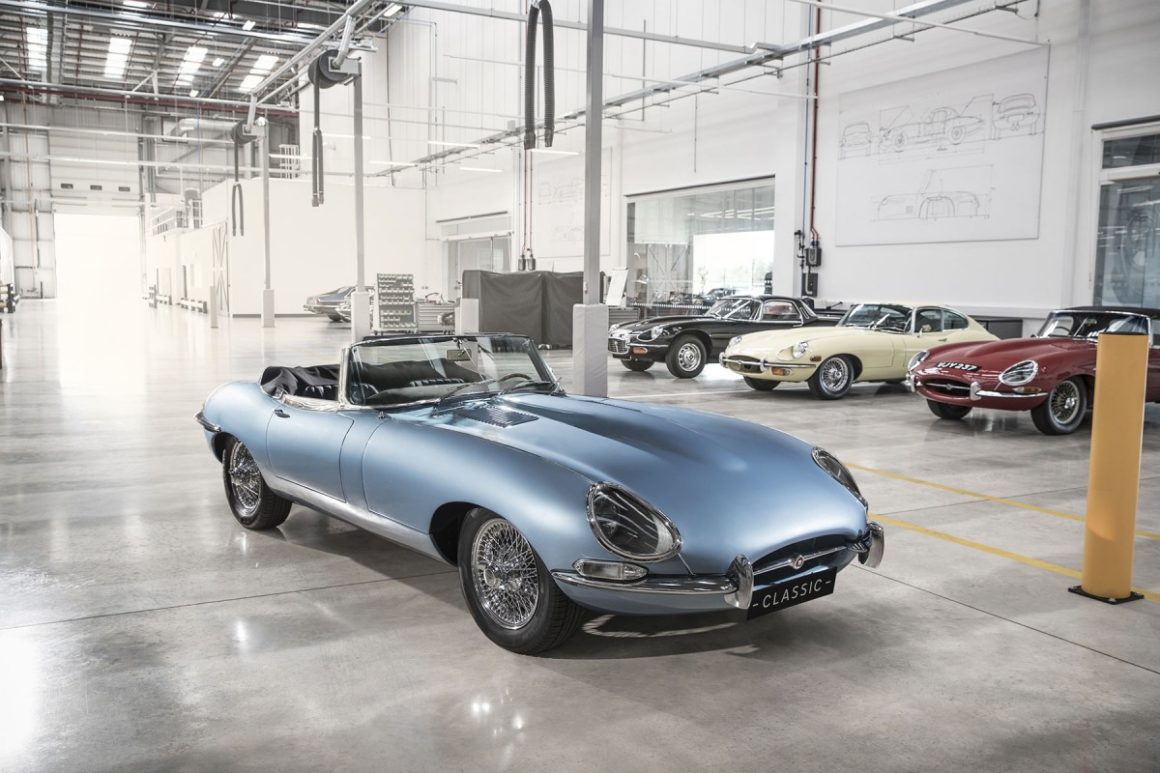
Of course, the monster can exceed on paper the 220 km/h in European version. But even with new suspension, Michelin XVS in 185R15 radial, the Rolls of the socks (which was far from being the original fitment in 1961) the handling of the E-Type requires constant attention. Especially when you try to get out of the legal frame… So be satisfied with the delicious accelerations, some “enrhumant” overtaking and especially the enchanting roaring vrops of the double shaft which call for an essential equipment, a sport exhaust line and a liberated alu manifold. Equipped with “compet”, the storm and thunder of the fourth movement of Beethoven’s Pastoral Symphony await you. Wagner’s Valkyrie from 3500t, if you prefer helicopter warrior evocations. The sound of this engine is a delight. A pleasure under railroad bridges or in tunnels.
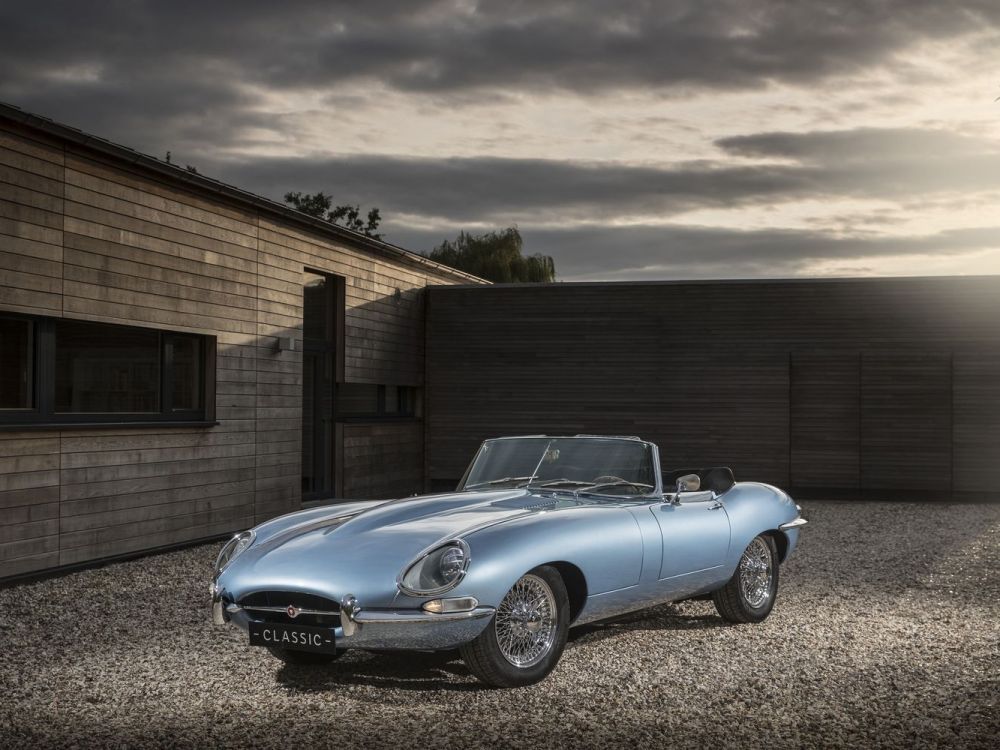
Acceleration isn’t everything. Even if, as the pilots’ saying goes, “the first one to brake is a coward”, we will have to think one day about trying to slow down the machine. With four new discs, new caliper pistons, new master cylinder and servo you will be able to slow down the crew properly. With 50 years old equipment, changed according to its wear and tear, it is less won. Since the rear brakes are “on board”, i.e. located around the axle and not near the wheels, they cool poorly and often collect grease from the rarely sealed “final unit“. Crab braking is a sport you should consider learning if you want to control an E-Type. This is a flaw that this car shares with its two little sisters, the XJ6 and the XJS. Two Jaguar models that will use the IRS independent rear wheel system with four shock absorbers until the 1980s. In Britain, you don’t change an unfinished product. We improve it over time. And when it is finally almost perfect, we abandon it. Too bad. For the rest, a trip in a Jaguar E is obviously an incredible pleasure. A bite of Alba truffle risotto washed down with a glass of Gevrey-Chambertin. An adventure of course, but also a moment of reading. Even if everything seems to be going well at the wheel, you will regularly observe the fuel gauge that drops dramatically, the oil pressure that also drops as soon as the engine is hot, the water temperature that doesn’t stand up well to traffic jams and the charge meter that shows that the dynamo (alternator on the 2 and 3 series) is working properly.

What would a classic car be without the uncertainty of a smooth journey? A simple, reliable, impersonal and therefore useless “mover”. I made a few trips from Paris to Cannes in a Jaguar E at a time when there were no limits,” confided journalist Philippe Bouvard, a great lover of exceptional cars. One night, I even had to take less than 7 hours from door to door! This car was incredibly fast, but I think I have never been so scared at the wheel. What’s more, on roads that were national in name only at the time. So much so that after each of my records, it would take me several hours to recover from my silly exploits.” Nothing stops a Jaguar, as the English say, not even the brakes. And yet Dunlop is the inventor of the discs. So there’s no need to tempt the devil when driving this masterpiece. You don’t even need it. Just enjoy a magical moment. A unique experience. By telling you that you are already in heaven.
Some addresses:
– Classic Fabs, the Scottish prince of exhaust. Must-see: https://classicfabs.co.uk ;
– Rent one: First GT Location (two E-Types including a 4.2L twin carburetor Zenith): www.first-gt.com/flotte-de-vehicules/?fwp_marques=jaguar


